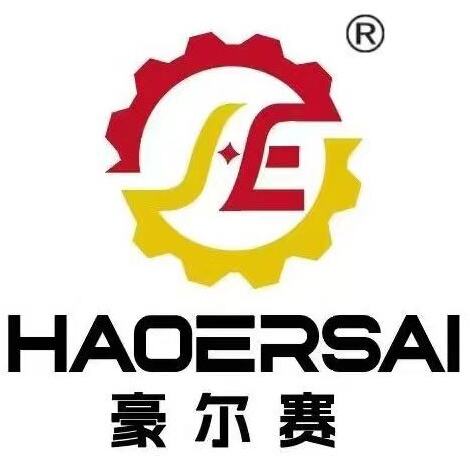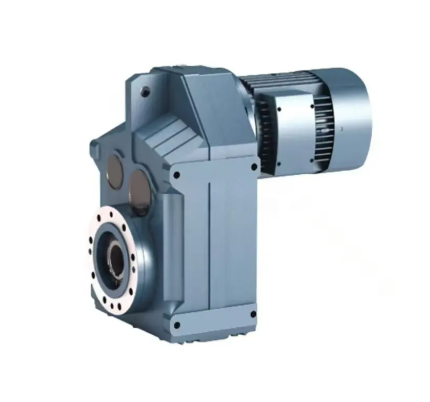Robotics and Automation: Precision Applications of Speed Reducers
Backlash-Free Operation in Robotic Arms
When it comes to robotics, getting those movements just right matters a lot, especially with robotic arms doing the work. The problem? Those tiny errors called backlash happen when there's space between gear teeth, causing little jerks that mess up performance. That's why speed reducers matter so much. These components are built specifically to eliminate that backlash issue, keeping torque transmission smooth and steady throughout operations. Why does this matter? Think about putting together sensitive electronic parts or even assisting during surgery where millimeters count. Take IMSystems for example they developed something called the Archimedes drive that doesn't rely on traditional gear teeth at all, eliminating backlash completely and boosting productivity. Major players in industrial robotics have already started adopting these kinds of drives, showing real improvements in both precision and overall system efficiency across manufacturing floors worldwide.
High Torque Density for Industrial Automation
Torque density basically measures how much torque a speed reducer can produce compared to its actual size, and this matters a lot in industrial automation settings. When manufacturers need stronger power but limited space, higher torque density lets them build more powerful drives without taking up extra room on the factory floor. Speed reducers actually boost torque density while making machines run better and take up less space overall. Companies working with advanced speed reducer tech from firms like Nabtesco report real savings over time because their equipment consumes less electricity and fits into tighter spaces than traditional models. For many plants, getting higher torque density makes all the difference when looking at monthly energy bills and maintenance costs. Some plant managers we've talked to say switching to these modern speed reducers cut their energy expenses by around 15% within just a few months of installation.
Automotive Industry: Power Transmission Solutions
Electric Vehicle (EV) Powertrain Systems
Speed reducers are really important when it comes to making electric vehicles work better and last longer. These components basically make sure power gets transmitted properly through the system, which means cars can go further on a single charge while managing their energy more effectively. When we look at how they're used in EVs today, things like smoother acceleration and less wasted energy stand out as major benefits for improving overall efficiency. Some research from around 2024 suggested that demand for these parts was going to jump quite a bit because of new tech developments plus people wanting greener transportation options. Industry folks are seeing this trend continue as well, with growing interest in speed reducers matching up with the expanding EV market. Manufacturers just want better performing parts that won't let them down over time, so naturally they're turning to these kinds of solutions more often now.
Dual-Clutch and Continuously Variable Transmissions
Speed reducers play a major role in improving dual-clutch and CVT transmissions. For dual-clutch systems, these components help create those smooth shifts between gears while keeping fuel consumption down and acceleration feeling more responsive. When it comes to CVTs, they work differently but just as effectively. These transmissions constantly adjust their gear ratios to match driving conditions, which means power gets transferred more efficiently throughout the vehicle. The real advantage here is reduced energy waste, making both transmission types perform better overall. Automotive engineers have noticed something interesting too many drivers now prefer dual-clutch models compared to traditional automatics because they deliver better performance without sacrificing gas mileage. As a result, speed reducers have become essential parts of modern transmission design, explaining why we see so many cars on the road today equipped with these advanced systems that balance fuel efficiency with comfortable driving experiences.
Manufacturing and Heavy Machinery
Speed reducers are really important for making conveyor systems work better and move more stuff through production lines. These devices help keep things moving smoothly and consistently along factory belts, something that matters a lot when trying to keep materials flowing without hiccups. A bunch of factories have seen real boosts in performance after installing speed reducers throughout their operations. Take one food processing plant as an example they reported around 25 percent higher output once they upgraded their conveyor setup with proper speed reduction components. The benefits go beyond just faster movement though. Factories save money too because these improved systems mean fewer breakdowns and less time wasted waiting for equipment to catch up.
Industrial pumps and mixers operating under heavy loads encounter real problems over time. The constant strain leads to parts wearing down faster and systems becoming less efficient, which hits production numbers and drives up repair bills. That's where speed reducers come into play. These devices make a big difference in factory settings because they help spread out the workload across different components, reducing the stress on any single part. When this happens, machines last longer before needing replacement. Factories that have installed speed reducers report fewer breakdowns during operation. According to field reports from manufacturing plants across various sectors, adding speed reducers to their heavy duty equipment has cut down on component damage substantially, making pumps and mixers run better for extended periods without frequent servicing.
Renewable Energy Systems
Wind Turbine Pitch Control Mechanisms
Pitch control systems in wind turbines matter a lot because they adjust blade angles to get the most out of available wind power. Speed reducers are key components here since they allow for fine tuning of those blade positions, which keeps everything stable while maintaining good performance levels. When these pitch control systems work well, the speed reducers actually boost how much energy gets harvested from each turbine by matching blade angles to whatever wind conditions exist at any given moment. Industry studies show that when pitch control is properly optimized, there's often a noticeable jump in overall energy output. This improvement makes a real difference for advancing our renewable energy goals across the board.
Solar Tracking System Efficiency
Solar tracking systems work by adjusting panels to follow where the sun moves across the sky during the day, which helps collect more solar energy overall. These systems need something called speed reducers because without them, the panels wouldn't have enough force or accuracy to keep moving properly all day long. When solar panels track the sun better, they generate electricity more efficiently, making solar farms produce way more power than fixed panels alone. Research shows that good tracking systems can boost solar production by around 25 percent. This means speed reducers aren't just some fancy part sitting inside machinery they actually play a big part in getting the most out of every sunny day for solar installations everywhere.
Aerospace and Power Generation
Aircraft Landing Gear Mechanisms
Aircraft landing gear systems in the aerospace sector represent some of the most important parts of any plane when it comes to safely getting off the ground and back down again. These complex mechanisms require exact specifications throughout their design, and within them lie speed reducers that act as key players in how they function. The job of these reducers is basically to handle all those moving parts during gear extension and retraction, controlling just how fast everything happens. Without this kind of fine tuning, planes could face serious issues with balance and dependability, particularly at moments when every second counts like during emergency landings or takeoffs from short runways.
Adding speed reducers to landing gear systems makes them much safer against failures that could lead to serious problems during landings. When planes touch down, these devices help slow down the movement of the gear so everything doesn't lock up suddenly. The aviation industry has seen real benefits from this approach. Looking at accident reports over the past decade shows fewer issues related to landing gear deployment since manufacturers started incorporating better speed reducer tech into their designs. Pilots and maintenance crews now consider these components essential parts of modern aircraft because they literally stop catastrophic failures before they happen.
Turbine Speed Regulation in Power Plants
Controlling how fast turbines spin inside power plants plays a big role in getting the most energy out of them and keeping everything running smoothly. These machines need to hit just the right RPMs if they're going to work efficiently and produce good amounts of electricity. That's where speed reducers come into play. They help manage those spinning speeds so things don't get out of hand. When these devices slow down what's coming from the motor but boost the twisting force instead, it means turbines can keep turning at exactly the pace needed for best results day after day without burning out or wasting fuel.
Speed reducers play a critical role when it comes to getting the most out of turbine operations. They give operators better control over speeds, so there's less chance of those annoying fluctuations that waste energy and reduce efficiency. The industry data shows pretty clearly that when plants use speed reducers for turbine regulation, their overall efficiency goes up significantly. Take a look at some actual case studies from power plants around the country – many have seen output improvements while cutting down on maintenance expenses at the same time. This is why most modern power facilities now consider speed reducers essential equipment. After all, nobody wants to pay extra for electricity production just because turbines aren't running smoothly.
FAQ
What is backlash in robotic arms?
Backlash refers to the slight jolt resulting from gaps between gear teeth, which can hinder the precision of robotic arm movements.
How do speed reducers benefit the automotive industry?
Speed reducers enhance the efficiency and performance of electric vehicles by facilitating optimal power transmission and reducing energy loss in powertrain systems.
Why are speed reducers important in renewable energy systems?
Speed reducers optimize pitch control in wind turbines and enhance solar tracking systems, thereby maximizing energy capture and efficiency.

